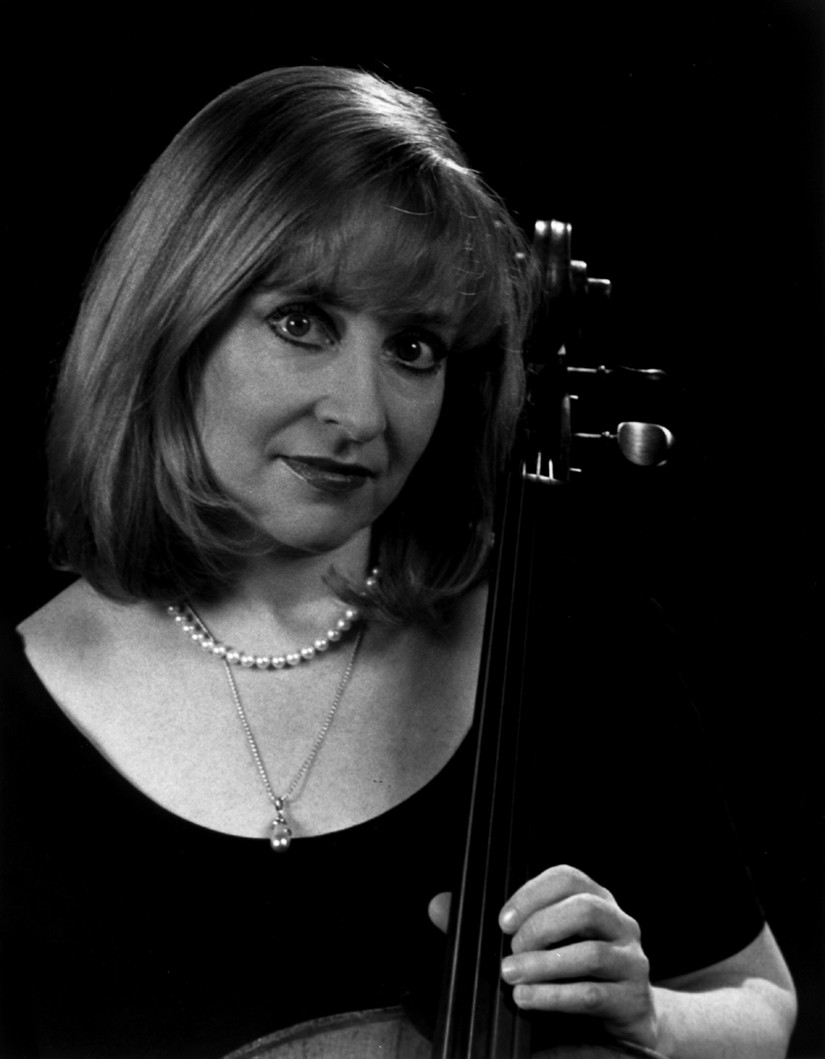CONVERSATION WITH JANET HORVATH
by Chrys Wu |
 |
When you hear the words "Mahler's Fifth," you probably think "great
music." Janet Horvath wants you to think "phenomenal athleticism."
Horvath, associate principal cellist of the Minnesota Orchestra and a
pioneer in performing arts medicine, has been on a mission to get
musicians, instructors and management to realize that playing any
instrument
is physically demanding.
The last movement of Mahler's fifth symphony requires cellists to make
6400 movements in the left hand
alone, she said. "It's really awesome what we expect of our bodies and
we feel very let down when something goes wrong."
Fresh from a European tour of 12 concerts in 11 cities over 14 days,
the Minnesota Orchestra has finished the equivalent of an adventure
race. And just like those extreme athletes, the orchestra members were
constantly on the move and sleep-deprived. Combined with a demanding
but genial conductor, intensive rehearsals, and high expectations,
injuries and illnesses were bound to happen.
Knowing this, Horvath asked management to hire a physical therapist for
the tour. "Musical performance is athletic," she said. "Athletes travel
with their sports trainers. Why shouldn't we?"
Orchestra management argued that they didn't have the money. But thanks
to Horvath's campaigning and strategic phone calls by fundraising
volunteer Holly Slocum, orchestra donors paid for a physical therapist
to travel along and offer services full-time. Management was off the
hook, and the musicians had relief.
Not only did the therapist work out performers' muscle kinks before and
after concerts and rehearsals, she conducted stretching classes and
treated other staff, guests, and even one of the truck drivers.
"She was sought out way more than the medical doctor who accompanied
us," said Horvath. "The preventative nature of what she does and did
for us was very, very important and helpful.... She even stopped [my head]
cold dead in its tracks."
In Horvath's 25 years with the Minnesota Orchestra, she said no tour
has been as grueling or successful as this one. She attributes a large
part of the success to Kathy McClure, the physical therapist. "What we
know from previous tours is that there've been a lot of injuries and
illness," said Horvath. "I hope this will be precedent-setting because
musicians will know the benefit."
Had it not been for her own need for rehabilitation while studying
with Janos Starker at Indiana University, Horvath may never have had
the career she has today.
"When I was a student with Starker, I wanted to be the best Starker
student who ever lived," she said. "I was kind of sheltered, and was
kind of lonely, so I locked myself in a practice room and practiced
hours and hours and hours. I believed I could play thorough the
pain.... We called it Bloomingtonitis."
The overpractice resulted in cumulative soft tissue injury so severe
that Horvath could not perform daily tasks. Holding a knife and fork,
turning a doorknob, and answering the phone were impossible. Fearing
she'd never regain normal use of her hands, Horvath created her own
recovery program under Starker's guidance and made a comeback. She also
started to talk publicly about her experience and gather information on
how to prevent injury.
Her research resulted in the book, Playing (Less) Hurt: An Injury Prevention Guide for Musicians. Now in its third printing, Playing (Less) Hurt details how and why musician injuries occur, gives practical advice on how to avoid injury, and how to recover from injury.

For cellists, Horvath specifically recommends beginning each playing
session with long slow shifts and slowly warming up larger muscle
groups before beginning strenuous practice. She also suggests
periodically uncurling arms and letting them hang for a minute during
practice, and rolling shoulders and thumbs to relieve tension. For
every 50 minutes of practice, cellists should take a 10 minute rest
away from in the instrument and out of the chair.
Horvath's book also illustrates unobtrusive stretches that can be
performed on-stage, such as "Hey, look at the flutes! Aren't they
playing great today? Hey, look who's in the audience!"
Musicians who are injured so badly they have to stop playing must have
patience during the recovery process, Horvath said. "I tell people that
what you do is so physical and so athletic, that if you don't come back
painstakingly and slowly, then (the injury) becomes chronic.... You
need to be wise if you want to continue a long playing career."
Playing Less Hurt is available through Horvath�s website,
www.playinglesshurt.com,
Amazon.com, Barnes & Noble.com, Shar, and Southwest Strings.
When she is not performing with the Minnesota Orchestra, Horvath plays
chamber music on tour, gives salon concerts locally, and lectures on
performing arts medicine throughout the country.
Copyright © Chrys Wu 2004. All rights reserved.



